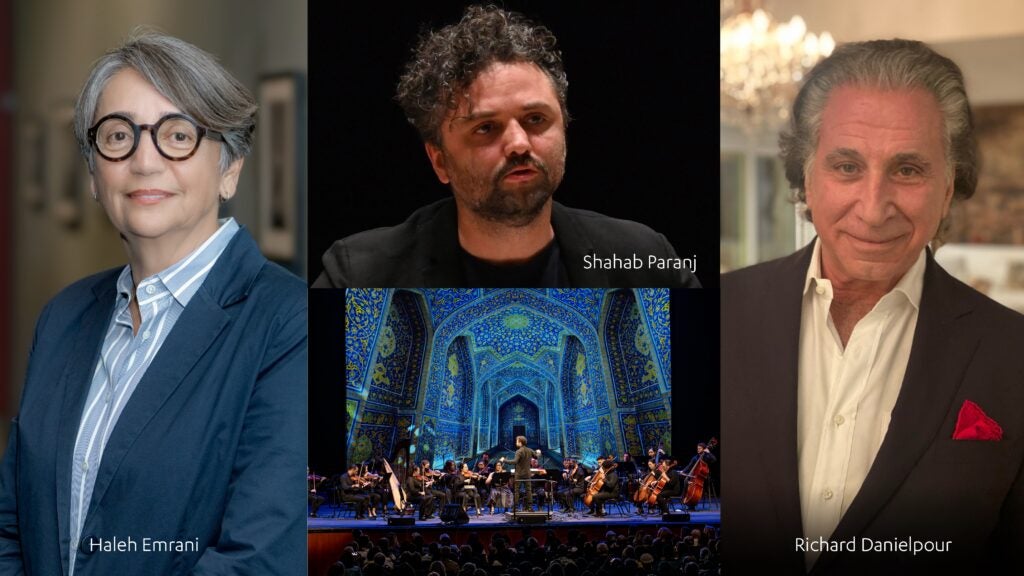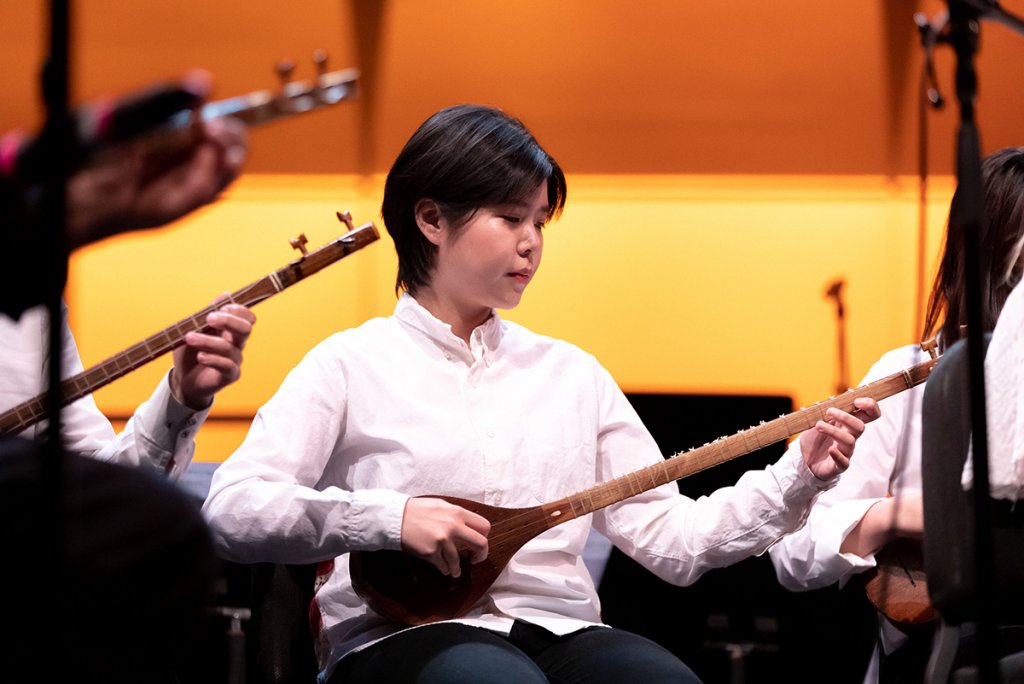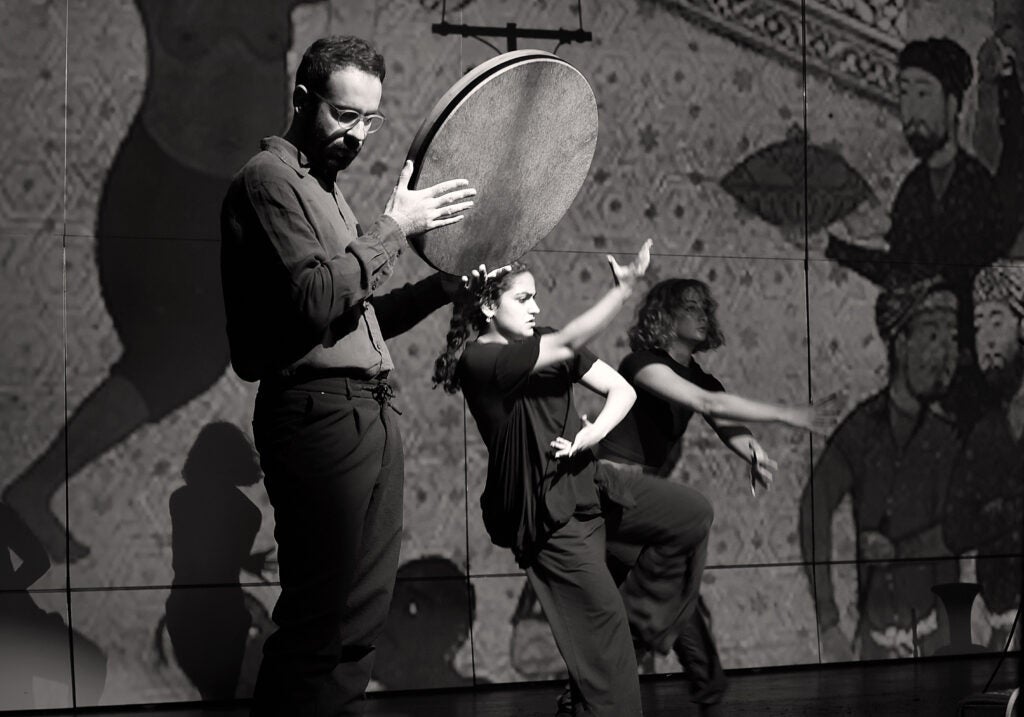Through a $5 million pledge by Haleh Emrani in honor of her late husband, Ahmad Gramian, UCLA will establish the Gramian-Emrani Center for Iranian Music in The UCLA Herb Alpert School of Music. The new center builds on the school of music’s Iranian Music Program, established after a 2018 gift from Farhang Foundation, a non-political, non-religious, not-for-profit community organization devoted to celebrating and promoting Iranian art and culture, of which Ahmad Gramian was the chair.
Gramian-Emrani Center
for Iranian Music


Gramian-Emrani Center for Iranian Music endowed fund established with $5 million
The Gramian-Emrani Center for Iranian Music offers a wealth of programming every year. Visit this page for upcoming events, and to see past events on our YouTube channel.

The Legacy of Hormoz Farhat – November 16, 2025

Meet the Director of the Center

Meet the Gramian-Emrani Postdoctoral Fellow in Music


The Gramian-Emrani Center for Iranian Music at The UCLA Herb Alpert School of Music offers cultural programming, scholarly inquiry, and the teaching and learning of Iranian music. The center supports the academic Minor in Iranian Music with a number of courses that combine interest in music as an art form with questions about how musical art and practice relate to other aspects of Iranian culture, society and history. The courses invite students to take both a theoretical and a hands-on approach to issues of Iranian music, including improvisation, mode, rhythm, dance, pedagogy and poetry. These courses bring the rigor of scholarship in conversation with the experience of music-making.
For information about course enrollment, contact Shahab Paranj.
Iranian Music Courses
ETHNMUS 91L – This course requires students to study and to perform in a variety of Iranian music styles. It will analyze the basic components of Iranian music compositions and arrangements, including song structure, melodic and rhythmic patterns, and arrangement techniques.
ETHNMUS 161L – This course requires students to study and to perform in a variety of Iranian music styles. It will analyze the basic components of Iranian music compositions and arrangements, including song structure, melodic and rhythmic patterns, and arrangement techniques.
ETHNMUS 91L – This course surveys the basic structure of rhythmic patterns in Persian music. Classes are taught online via Zoom. Students will be introduced to different rhythms of both folk and classical traditions, by watching various music samples and practicing. In each session, students will learn the basic techniques of tombak or daf as well.
ETHNMUS 161L – This course surveys the basic structure of rhythmic patterns in Persian music. Classes are taught online via Zoom. Students will be introduced to different rhythms of both folk and classical traditions, by watching various music samples and practicing. In each session, students will learn the basic techniques of tombak or daf as well.
ETHNMUS 188 – This course explores current practices of Iranian music in relation to gender and sexuality in popular music (e.g. rock, dance, hip hop, pop, etc.), folk music and traditional music (mūsīqī-e sonnatī). The topics explored in this class relate to women and music after the 1979 Iranian Revolution. The topics include: a) the “tradition” and musical constructions of masculinity; b) sexuality and femininity; c) discourses of gender identity; d) feminist criticism of musical practices; e) deviance and sexuality in musical practices; and g) music, politics and sexuality. Throughout the quarter we will read and discuss foundational texts about music, gender and sexuality, as well as engaging in close listening and watching important musical performances by Iranian women musicians. These discussions will also lead to analyzing the intersections of gender, social class and race in today’s Iran. P/NP or letter grading. (4 units)
ETHNMUS 188 – This course is designed to expose students from a wide background of experience, outlooks and training to the many facets of the art and craft of improvisation in Iranian music. The class examines how the organization of the radīf (the collection of melodic figures preserved through oral tradition that provides the basis of improvisation) and the master and disciple teaching and tutoring, shape the improvisational practices in Iranian traditional music. In addition, the class will compare the radīf to a number of related musical cultures: the Arabic maqam, the Turkish makam and a number of ragas from the North Indian tradition. Based on a workshop format, the students are encouraged to bring their own musical instruments, or for vocalist to join in, in exploring the radīf. We will learn how to memorize, compose and improvise important parts of the radīf. P/NP or letter grading. (4 units)
ETHNMUS 188 – This course examines a range of popular music that has emerged in conjunction with the mass exodus of Iranian musicians to Los Angeles after the 1979 Revolution. Diaspora is a term that describes the dispersion of a population from a common point of origin and the communities that form as the result of the dispersal. It is usually defined as a condition of placelessness, not fully belonging to any one place, being situated in-between, neither completely here nor there. The course is divided into five sections concerning Iranian popular music and the diaspora spanning from the early 1980s to today: a) “collective memory” of the homeland in exile (the “true” home to which one eventually returns); b) the commitment to the “restoration” and “maintenance” of the old homeland; c) “identity,” a sense of personal or collective belonging to Iran and/or the United States; d) “transnationalism,” the global outreach of Iranian musicians in Los Angeles through concerts, television programs and recordings around the world; and e) “digital diaspora,” the global proliferation of music without the presence of a community (e.g., hip-hop as a medium for community empowerment and the recent impacts of digital media and social networking). P/NP or letter grading.
This course is a mini-ethnography that explores how popular musicians have come to shape the musical scene in the Greater Los Angeles area since the 1979 Iranian Revolution Iranian. The class examines the role that Los Angeles as a large cosmopolitan center for Iranians in the diaspora plays in creating new musical experiences, where diverse Iranian and non-Iranian artists with different backgrounds, race, ethnicity and class have come together to create new aesthetic experiences. (4 units)
Related News



